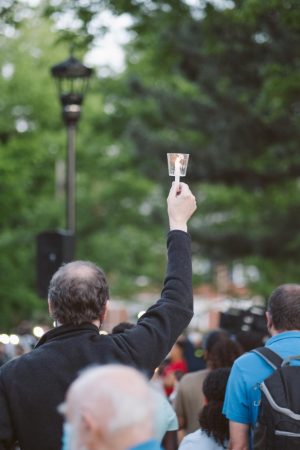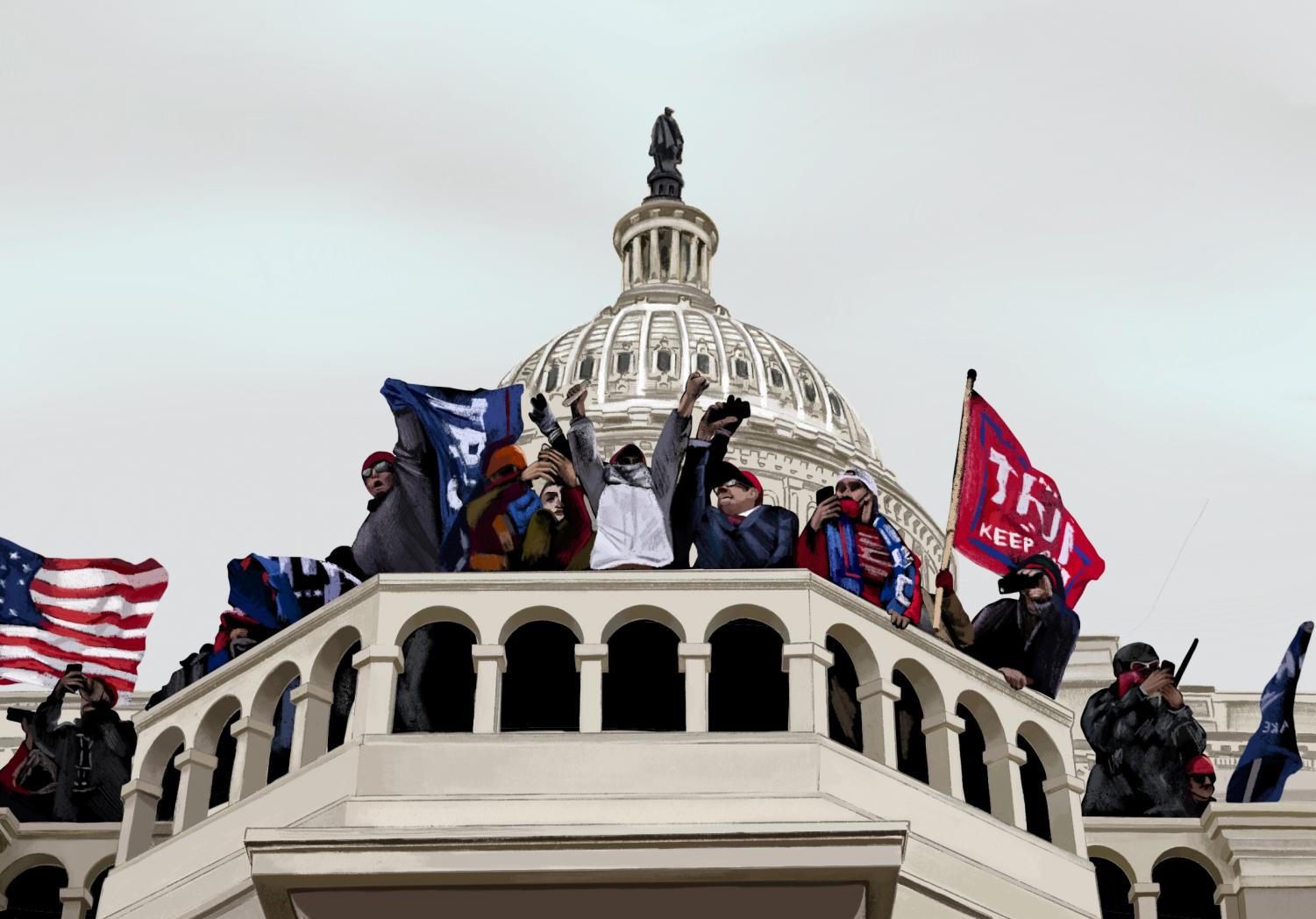Call It What It Is
White supremacy must be classified as terrorism
September 8, 2021
What is the first thing that comes to mind when you hear the word “terrorism”?
Terrorism is like a buzzword to me. Being born in 2003 means I feel the effects of a post-9/11 world without experiencing the fear those who were alive then did, and perhaps the fear they carry with them now.
To me, terrorism never seemed like a legitimate threat. Terror attacks seemed akin to shark attacks: horrific stories that rarely happened and scared you, but didn’t affect you. Four years ago, I realized terrorism was not what I thought it was.
In August 2017, the “Unite the Right” rally became a defining moment in American history. While activists cheered the removal of Confederate statues, white supremacists chanted hate toward Black people, Jewish people and anyone who didn’t fit the “Aryan ideal.” I watched as a Black teenager was savagely beaten and a woman was mourned after a white supremacist murdered her with his car.
That was terrorism.
The threat of terrorism may scare people, but the word itself can prove dangerous to people as well. After 9/11, the persecution of Muslims greatly increased in the United States. According to the FBI, hate crimes against Muslims from 2000 to 2001 increased by 1,600 percent. The Patriot Act of 2001, passed in reaction to 9/11, was abused by the FBI to target Muslims when preventing terrorism.
In 2005, after the ACLU wrote a letter to Congress outlining these abuses, Congress agreed that the Patriot Act had been exploited by the FBI to discriminate against Arab and Muslim communities in the United States. However, these abuses were not curtailed,and the FBI continued to wield its power against minority communities. Mosques were surveyed by the FBI, and anti-terrorist agents were taught to look out for factors that may indicate the radicalization of Muslims. These factors included more involvement with Muslim activities, increased mosque attendance and growing facial hair.
Being a Muslim does not mean you are a terrorist, no matter how devout you are or how thick your beard is. Law enforcement practices like these show how the word terrorism can be abused.
On Jan. 6, terrorists attacked our nation’s Capitol. Police on standby shockingly met threats to hang our vice president and speaker of the house with inaction. Law enforcement officers treated the attackers like people attending a rally, not the terrorists they were.
The attack on the Capitol represents the threat white supremacy poses to us. Even when its violence doesn’t directly affect you, its message does. While the overwhelming majority of Americans condemned the Capitol attack, a Huffington Post poll found that “a third of Trump supporters empathize with the mob.”
The events of Jan. 6 were examples of both fascism and white supremacy. The violent rioters tried to turn over the election results by threatening the lives of the former vice president and members of Congress. The attackers carried Confederate flags into the Capitol, and one man wore a shirt reading “Camp Auschwitz.” These disgusting and racist symbols show the true motivations behind the attackers. And still, the Huffington Post poll revealed that 18 million Trump supporters approved of the attack and 24 million Trump supporters believed that the attackers represented people like them.
Not all white supremacy is terrorism, as it is prevalent in many forms and institutions. In some cases, these institutions are more dangerous and powerful than terrorism itself. It is easier to band against a group of people wearing swastikas and toting rifles than against your own law enforcement system. All forms of white supremacy must be dismantled to achieve the equitable society that defines the American dream, but before we can knock down these racist institutions, we must identify them.
The Capitol attack led some activists to warn against applying the term “terrorism” to the insurrectionists. Columnist Rania Batrice of the Boston Globe wrote that though the white supremacists at the Capitol did terrorize our nation, “the use of these words only elevates a harmful counterterrorism framework that has historically been used to target Arab, Muslim, and Black communities.” This fear is counteractive to the goal we are trying to achieve. By not using the word “terrorism,” we do not stop others from continuing to use it to villainize these minority communities.

The FBI defines domestic terrorism as “violent, criminal acts committed by individuals and/or groups to further ideological goals stemming from domestic influences, such as those of a political, religious, social, racial, or environmental nature.” This definition explicitly describes the behavior witnessed at the Capitol.
The word “terrorist” itself did not drive the abuses made against the Muslim and Arab community; institutional and societal racism did. Some people need to be defined as terrorists in order to be recognized as a legitimate threat. When we use the word “terrorist” to describe white supremacists, we are not fear-mongering. We must stop pretending that these are niche groups that do not have power over our country. These hateful groups are legitimized by the racism embedded in our government and the ignorance of their power.
Five people died because of the Capitol attack. Rioters screamed a violent barrage of hate within our nation’s pinnacle of democracy. Their actions threatened the millions of Americans who are Black, Muslim, Jewish or who refused to accept Donald Trump’s lie. This is terrorism. To fight it, we need to call it what it is.
A version of this article appears in print on pages 42-45 of Volume 91, Issue I, published May 28, 2021.
